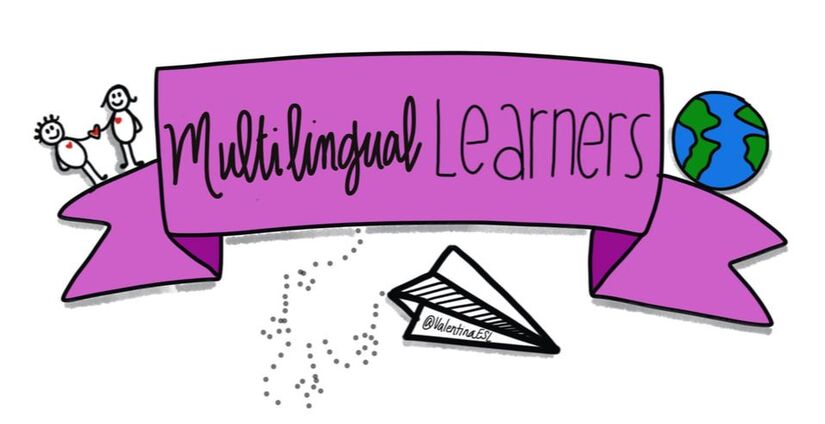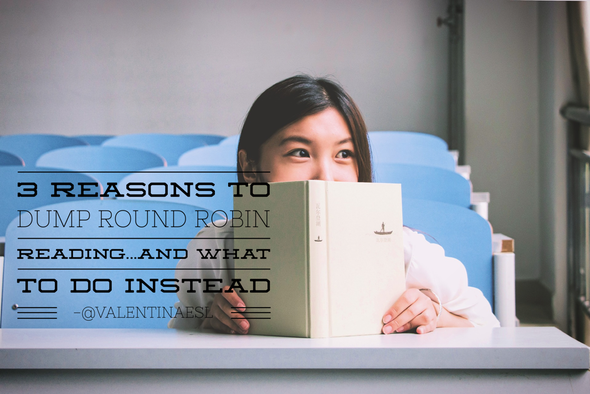|
I get it and I've been there myself. You have a lot of reading material to cover so you think Round Robin Reading (or Popcorn Reading) will do the trick. You want to make sure everyone reads it and stays on track. It seems really logical. Round Robin Reading (RRR), for those that may need a definition, is when students read orally one at a time from the same text. Some say that this is the best way to get students to really despise reading. A variation of RRR is Popcorn Reading. It sounds like more fun--but don't be fooled. It's not. It's the same type of reading activity with the same negatives and benefits. In Popcorn Reading, the only difference is that students randomly and spontaneously call out a new student's name to be the next reader. Why you should DUMP Round Robin Reading... Reason 1: Well first, think about what students are going through during this activity. Most are sitting in class with the text in front of them, nervously waiting for their turn. If the selection is random, they may be filled with anxiety about when they will be called on. If the selection is in a certain predetermined order, then they are just waiting for their turn and probably trying to estimate what portion they will need to read. Either way, when their turn is finished, they probably are relieved and zone out. So RRR is a waste of time. We may think we are covering the content, but the simple act of covering it does not mean that students will gain anything from it.
Reason 2: The small chunks that students are reading don't do them any good. They aren't sufficient enough to help students comprehend well. Nor are they large enough to promote fluency building. The amount each student reads does not help them make progress in reading ability or in comprehension. So just the act of getting through the text with the class doesn't mean the students got anything out of it. It was mostly a waste of time. Reason 3: For English Language Learners, this type of activity can raise the affective filter (Krashen, 1982). The affective filter is a like a wall that goes up when fear or anxiety is high. When the wall goes up, learning goes down. If a child is worried about being embarrassed or filled with fear in the classroom, the chances that they will make gains in learning content are very low. Struggling readers (who may not be ELLs) are similarly affected by RRR. Think of something you don't do well...do you do it daily? Do you like to do it in front of your peers? Probably NOT! Well, our ELLs and struggling readers are brave enough to show up every day and keep working at reading. The least we can do is help to build their confidence and make them feel successful and safe to learn. What to do instead... 1. Read aloud Students gain more from hearing their teacher read aloud than from reading a small portion of text. Listening to a proficient reader gives our students an example of what good readers do when they tackle texts. It's a great opportunity to share with the class how to read a challenging word or what to do when you finish a paragraph but you don't know what you've read. Reading aloud allows students to hear correct fluency and prosody. Students need to listen to the way English sounds. One way to lift read aloud up a notch is to include some student interaction. Stopping every now and then to ask key questions allows students to think about what they have heard and interact with the reading. But instead of calling on only a student at a time, ask students to share with their partners (Partner A, Partner B or Talking Heads). 2. Choral Reading Choral reading is a way to get the class involved while reading the same text. This is where the class reads the same text together at the same time-hence the name choral. The nice thing about choral reading, is that since everyone is reading at the same time so no one feels on the spot. The affective filter is lowered while all students have access to the same text. Choral reading can be done whole group, in small groups, or in pairs. When students practice Choral reading, they are flexing their listening, speaking, and reading skills. 3. Free Voluntary Reading Another way to get kids reading and build fluency is free voluntary reading (Krashen). In FVR, students have choice in what they read. We know that choice is a huge factor in engaging and motivating our students, so FVR helps to get students reading more and gaining a love for reading. This research based reading approach has been proven to increase reading in students. Research has also proven that the more students read, the higher their achievement soars. 4. Ear to Ear Reading Ear to Ear reading is an excellent, low pressure Guided Language Acquisition Design strategy that allows students to reread a familiar text with a partner. With this approach readers work in a small setting which lowers the affective filter while practicing reading for fluency and comprehension. For detailed information about Ear to Ear Reading, click here. 5. Echo Reading Echo Reading is very similar to Choral Reading. In Echo Reading, the group or class is reading the same text but the teacher reads a phrase or sentence and the students repeat after. (It kind of reminds me of saying vows at a wedding.) What I really like about Echo Reading is that students hear the teacher first and then they imitate the fluency and prosody. Echo Reading helps students (especially ELLs) learn how English sounds. I'm a fan of Echo Reading in particular for Newcomer and Beginner ELLs since this reading strategy offers opportunities for both listening and speaking as well. Again, this one lowers the affective filter too! There are so many other ways to engage students in reading, build their love of reading, and deliver content. Please feel free to comment on the ones I wrote about as well as add your favorites. Why should we dump RRR? Our kids deserve better! More reading: https://literacyworldwide.org/blog/literacy-daily/2014/05/07/what's-really-wrong-with-round-robin-reading- http://eldstrategies.com/affectivefilter.html Comments are closed.
|
Categories
All
|


 RSS Feed
RSS Feed
